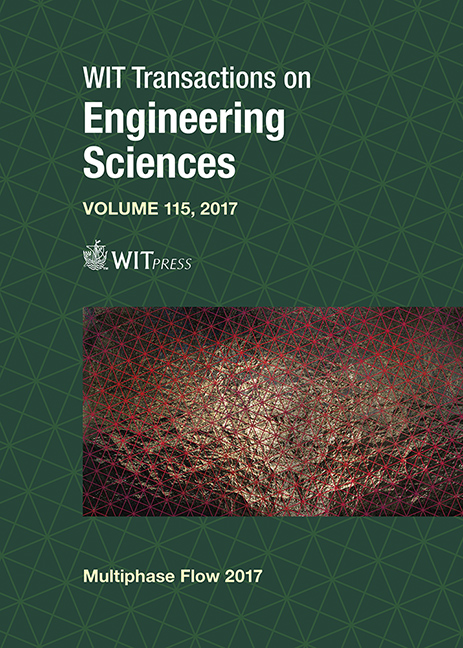INVESTIGATION OF UNSTEADY SHEET/CLOUD CAVITATION IN THE DIVERGENT SECTION OF A NOZZLE WITH EMPHASIS ON THE MECHANISM OF SHOCK WAVE PROPAGATION
Price
Free (open access)
Transaction
Volume
115
Pages
11
Page Range
119 - 129
Published
2017
Size
2,026 kb
Paper DOI
10.2495/MPF170131
Copyright
WIT Press
Author(s)
XIAOBO QUAN, SHAOHUA CHENG, CHANGCHANG WANG, GUOYU WANG, BIAO HUANG
Abstract
The objective of this paper is to investigate the unsteady pressure fluctuation characteristics in the process of breakup, and shedding of unsteady sheet/cloud cavitating flows via combined experimental and computational methods. Experiments are conducted in the divergent section of a convergent-divergent channel using a simultaneous sampling technique to synchronize the transient cavitation behaviours and wall-pressure signals. In the numerical simulations, the Zwart cavitation model and the modified RNG k-ɛ turbulence model are solved, with the compressibility effects of both water and vapour considered. In addition, one-dimensional bubbly shock wave relationship is applied to analyse the process of the discontinuity propagation. Two different types of cavity breakup and shedding existing in the unsteady sheet/cloud cavitating flows are observed, which is induced by re-entrant flow and discontinuity propagation, respectively. The re-entrant flow generates at the rear of the cavity, moving forward along the wall. When it arrives at the throat, it breaks up the attached cavity, resulting in the cloud cavity shedding. During the process, the wall-pressure fluctuation is relatively small. The discontinuity propagation results from the bubbly shock in water/vapour mixture of the sheet/cloud cavity. There is a significant difference in vapour fraction across the discontinuity. The pre-discontinuity area is almost pure vapour, and the post-discontinuity area consists of water/vapour mixtures with relatively low vapour fraction. During the discontinuity propagation, the pressure peak exists at shock wave front. When the discontinuity arrives at the throat, the void fraction will suddenly decrease, which indicates the low vapour generation rate. Under the convection of the main flow, the attached cavity will be separated from the newly generated vapour, resulting in the attached cavity breaking up and being shed.
Keywords
cavitation, cavity breakup and shedding, re-entrant flow, shock wave propagation, pressure peak





